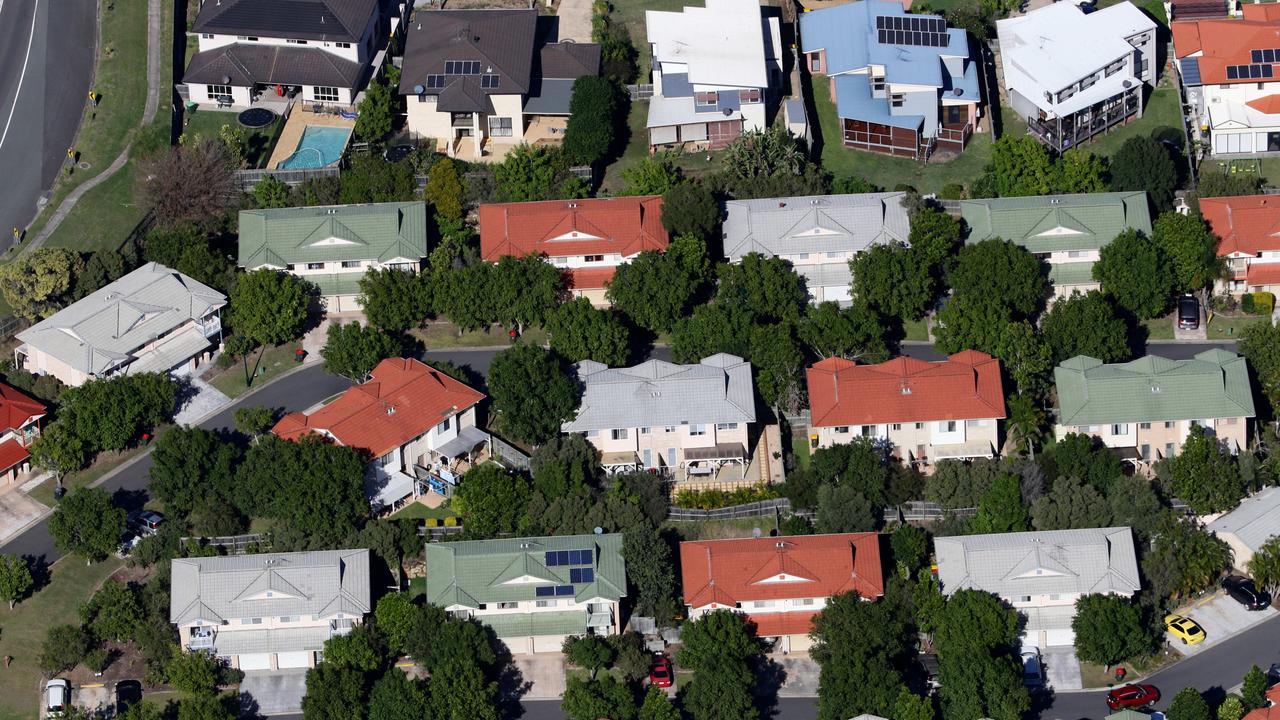Melbourne home prices: 245 suburbs where rises are outpacing interest rate hikes | PropTrack
Hundreds of Melbourne suburbs home prices have outpaced interest rate hikes in the past year, with experts confident that growth will soon accelerate. See how your suburb fared.

Oakleigh homeowners collected the equivalent of a $90,000 bonus income as it topped a list of hundreds of Melbourne suburbs where prices outpaced interest rate hikes in the past year.
And experts are increasingly confident the Victorian capital’s price growth will soon accelerate, with the prospect of a FOMO-driven market resuming before the end of 2024.
Search your suburb in the table below
RELATED: Two-speed market — City units now pricier than regional houses
Victorian apartment approvals plunge to 17-year low
Abandoned Melbourne mansion ideal for zombie movie

PropTrack’s latest quarterly data shows median house price growth in 290 suburbs — and in 245 the rise was high enough to put owners ahead of a 0.75 percentage point increase in home loan costs in the 12 months to March 31.
The tiny area of Bangholme in Melbourne’s south east, home to just under 400 residences, notched an about $38,000 increase in its median house price to $536,100 (7.7 per cent) at the top of the list.
But while nearby Oakleigh mustered a smaller 7.1 per cent increase, with the suburb’s $1.381m median house price it equated to a more than $90k boon.
Ray White Oakleigh director Leigh Kelepouris said he was surprised the “hidden gem” had outperformed almost every corner of Melbourne, but added it had become a magnet in the south east for buyers struggling to find affordable homes in nearby areas like Murrumbeena.
“People will move that bit further out to get a better value suburb,” Mr Kelepouris said.
Melbourne’s south east, east and outer east dominated the top performers list, with Doncaster East up $96,000 (6.6 per cent), Lysterfield gaining $76,000 (6.5 per cent) and Croydon Hills ahead by $67,500 (6.5 per cent).
The data also showed an eye-watering $189,700 increase in Toorak’s median house price, though the rise to $4.39m accounts for just a 4.5 per cent up tick.
RT Edgar Toorak director Jeremy Fox said much of the median price growth in Melbourne’s most well-heeled neighbourhood was driven by strong sales at the top end of the suburb, with a number of deals done ranging from $20m-$40m already this year.
Balwyn and Surrey Hills both also managed six-figure growth as they climbed to $2.86m and $2.27m respectively.
MORE: Melbourne’s top real estate young guns of the past year
Migrant hotspots where housing supply is falling short
But while most Melbourne homeowners scored a windfall, more than 70 per cent of regional areas covered in the data lost ground as the tail of a post-Covid market correction and population falls continued to erode prices in the state’s country towns.
The median house price data was calculated with PropTrack’s Automated Valuation Model, which uses an algorithm factoring in property types, sizes and other factors to establish median values for every home in a suburb — not just those recently sold.

Some suburbs were excluded as there were too few high-confidence estimates, typically caused by limited recent comparable sales.
PropTrack economist Anne Flaherty said Victoria was now going through the “complete reverse” of what happened in 2021, when a heavily locked-down Melbourne’s population fell and regional Victoria’s numbers rose.
“Melbourne has really been the underperformer of the capital cities of the past three or four years now, but things are really starting to shift,” Ms Flaherty said.
“Melbourne is now the fastest-growing city in terms of population, but not in terms of price growth, yet. But people need somewhere to live and that will spur demand for property and have a flow-on effect.”
Ms Flaherty added that unit owners hoping to upgrade might be in a good position to do so now as the more affordable home type had broadly outperformed houses in Melbourne – with gains recorded in 76 per cent of areas, according to PropTrack.
Taylors Lakes was the city’s number one market for units, with the typical value rising almost $40,000 (8 per cent) to $525,000.
It was enough for them to outpace the suburb’s median house price, which rose about $22,000 (2.5 per cent) to $922,600.
With growing certainty the next change to interest rates will be a cut, Ms Flaherty said the coming three months would be interesting for Melbourne as the rise in population competed with an expected up tick in homes being listed for sale as vendor confidence grows.

Prominent buyer’s advocate Cate Bakos said she was tipping more substantial growth, with interstate investors among those making a move for Melbourne homes and no sign yet of a glut of winter home coming up for sale.
“If we don’t get those listings we can anticipate a pretty busy winter with more people fighting it out,” she said.
“There’s a clock ticking with the prospect of an interest rate drop and people will get excited. I’m already seeing speculative behaviour from people buying now because they don’t want to get caught up in the FOMO.”
With the city’s population growing rapidly thanks to international migration, Ms Bakos said it would take a “huge number of listings” to unravel the chances of even stronger growth later this year.
Sign up to the Herald Sun Weekly Real Estate Update. Click here to get the latest Victorian property market news delivered direct to your inbox.
MORE: How Danny from The Block went from a little to a lot




